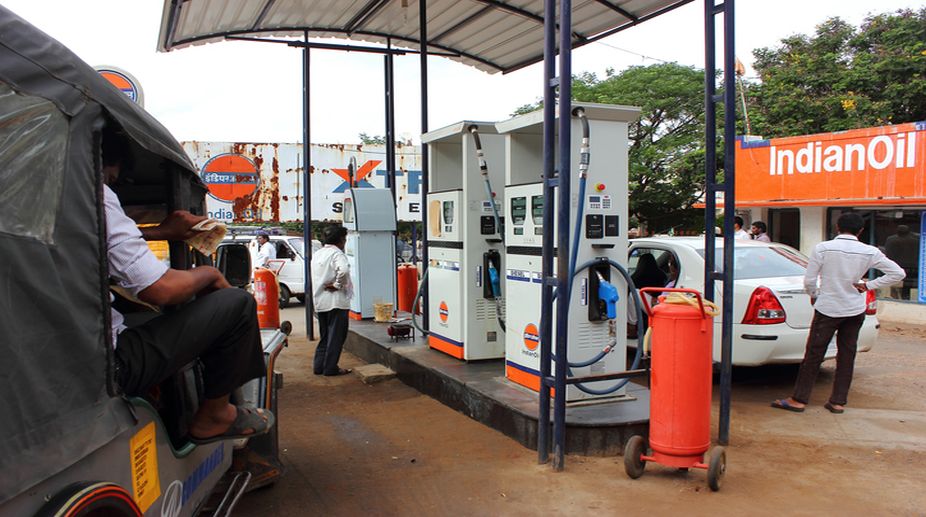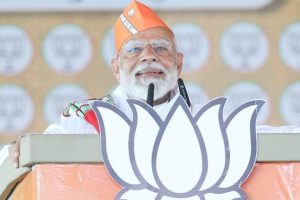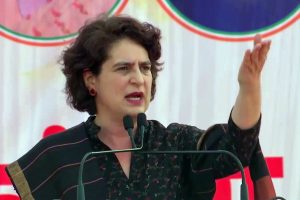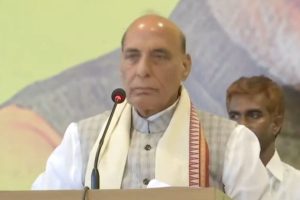To boost sales, an intelligent person in business attracts gullible customers with hefty rebates, say, an outright 50 or 70 per cent cut after sufficiently increasing the original price, even by 100 per cent or more. That is exactly how the government reduced last month the excise on petrol and diesel by Rs 2 a litre each, though not for the same reason of increasing sales but, due to the people’s resentment against steep price hikes.
The central excise duty on petrol increased from Rs 9.48 per litre in April 2014 to Rs 21.48 by October 2017 and in case of diesel, it went up from Rs 3.56 to Rs 17.33. This would mean that the hike was Rs.12 on petrol and Rs 13.77 on diesel against the slashing of Rs 2 a litre. The subsequent increase in prices has already covered this paltry concession and it might go up further in the days to come.
Unfortunately there have been no vehement protests from the ‘friends of people’ ~ the major political parties when not in power and some other anti-establishment groups that used to clamour whenever the petroleum product prices shot through the roof.
Of course, they are in a tricky situation now; the prices of diesel and petrol get revised every day in terms of the dynamic fuel pricing policy introduced from 16 June 2017. So, the fight should be against the policy itself but not at the time of a rise which is the symptom of the policy.
The present daily pricing method, devised to avoid even a single day’s shortfall in earnings by the companies and the government, is the culmination of the earlier policies which could not be stalled by opponents of market-friendly policies. The Administered Price Mechanism (APM), through which government controlled the prices, was dismantled way back in 2002; it was not done just one fine morning, but after a decade of planning.
The reforms-obsessed governments after the 1990s, led either by Congress or BJP, made a U turn from the first industrial policy resolution of 1948 which declared that ‘petroleum is a core sector of industry, the future development of which will be the sole and exclusive responsibility of the state’. The policy of ‘social benefit’ was replaced with the ‘commercial profit’ doctrine. The objective was to encourage greater private participation through better returns for their investment. Unfortunately, the opponents who were aggrieved at every price rice, could not resist this and subsequent policies which facilitated the price rise.
The drastic step of totally deregulating the petrol price was taken on 26 June 2010. In its pursuit of furthering this policy, the present BJP-led government also brought diesel under market control from 19 October 2014. It was effected at an opportune time when the international crude prices were low because the government realised that the protests would be more pronounced only when the adverse effects of the policies were palpable than at the time of bringing the policy into effect.
Whatever the method, the need for introducing the policy changes was based on wrong claims ~ huge losses suffered by oil marketing companies and the subsidy burden on the government. But the government’s own statistics prove them wrong. Neither did it provide more subsidies than it had gained in various forms from the oil sector, nor did the oil marketing companies sustain any loss.
During the five years leading to this change, from 2005-06 to 2009-10, the Government of India received a huge Rs 3,91,486 crore as tax and non-tax revenue from the petroleum sector against the paltry subsidy it paid ~ Rs 26,008 crore ~ which equaled to 6.64 per cent of what it received. Similarly, the companies under the petroleum ministry earned a profit after tax of Rs 1,26,294 crore and the three public sector oil marketing majors gained Rs 36, 653 crore.
The petroleum and natural gas statistics for 2015-16, compiled by that ministry, show the trends of increasing gains from the oil sector. The central government for the six-year period from 2010-11 to 2015-16 received royalties from crude of Rs 95,030 crore and from gas of Rs 19,744 crore. Towards the oil development cess, it earned Rs 62,689 crore for the same period. Similarly, its excise and customs kitties together got Rs 7,37,774 crore. Also it garnered dividends of Rs 86,589 crore. In addition, the State governments got Rs 6,99,544 crore from the oil sector.
The three public sector oil marketing companies, accounting for 93.6 per cent of the 56,190 retail outlets by 2016 in India also continued to make substantial profits. IOC’s profit after tax in 2015-16 was Rs 10,399.03 crore and was expected to grow next year to Rs 14,974.77 crore.
BPL’s figures were Rs 7,432 crore and Rs 6,123 crore and that of HPL were Rs 3,862 crore and Rs 4,500 crore. So, the oil sector is undoubtedly robust and getting stronger commercially by the day. As per the government’s own admission, ‘the share of petroleum sector in total subsidies has declined from 23.34 per cent (Rs 60,269 crore (actual) in 2014-15 to 11.64 per cent (Rs 30,000 crore in 2015-16 and is budgeted at 10.76 per cent in 2016-17.’
It is not correct to say that the government that gave subsidies to the oil sector, but it is that sector which met all the government subsidies. The total subsidy bill of the Centre in 2015-16 was Rs 2,57,731.95 crore whereas it earned revenue amounting to Rs 2,63,130 crore from the oil sector alone. And this royalty (Rs 16,774 crore), oil development cess (Rs 15,854 crore), Excise and Customs (Rs 2,13,995 crore) and dividends (Rs 16,507 crore). In addition, the sector has given Rs. 1,42,938 crore to the exchequers of states.
Macro-facts justify the need for reducing the petroleum product prices without harping on the much talked about facts such as “per litre cost, tax load”. It is not correct for the government to hide the facts behind the claims of excessive import dependence of crude; it should not forget to factor in domestic crude production while framing the price policy. For instance, in 2015-16, 36.950 Million Metric Tonnes (MMT) of crude was produced domestically and 202.85 MMT imported. Also, more than the required quantity is refined. The value of total petroleum imports in 2015-16 was Rs 5,27,765 crore, against the exports worth Rs 1,76,773 crore.
It is gratifying to note that the country is producing more petroleum goods than it actually needs. It should produce more by further increasing its refining capacity. It would benefit the country and its economy to earn more from the petroleum sector. But it should share the benefits with the people by putting an end to profiteering in the sector.
Still more crucially, it should abjure its move to privatise profits that rightfully belong to the nation and its people. Also, the price policy should be transparent enough whereby it leaves little scope for the wrong claims of ‘high subsidies’ to the oil sector when in reality, it is that sector which bears the burden of the entire budgetary subsidies of the Union government.
The writer is a Hyderabad-based development economist and commentator on economic and social affairs. He can be reached at raopsmrao@gmail.com











